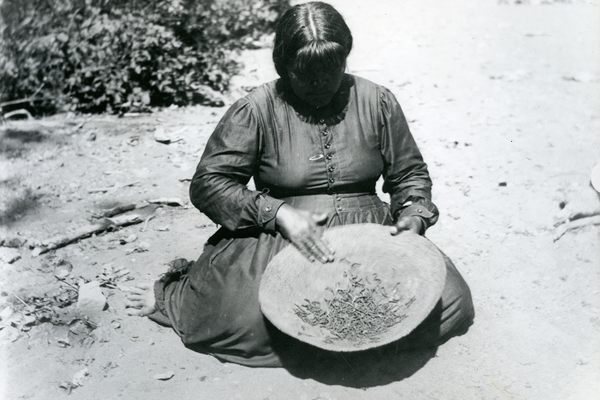An Online Collection of Maps Highlights the World’s Saddest Spots
Which way to Broken Heart Street?
There are many routes to Misery. From the north, you can take the Rue du Jeu de Paume; from the east, the Rue de Licourt; and from the south, the Rue de Billy, a meandering asphalt track that winds past bare fields, under an open sky. Any of these will lead to this French village of around 140 residents, 90 miles north of Paris.
Misery is one of more than 150 places with a desperately sad name, chronicled by the Australian artist Damien Rudd on his Instagram account, Sad Topographies. In British Columbia, Canada, the remote Sorrow Islands look out over miles and miles of empty ocean; Terrible Mountain can be found in Vermont; in Las Vegas, a wrong turn off Hearts Desire Avenue will leave you on Broken Heart Street, a lonely stretch of road 177 feet long. Each one has been lovingly screenshot from Google Maps and put on display—the world’s most joyless places, laid out in a feast of wretchedness, despair, and general disappointment.
It all started, Rudd says, when he learned about the Australian expedition of the explorers Robert O’Hara Burke and William John Wills, in which the men attempted to lead a party of 19 approximately 2,000 miles across Australia in 1861. Along the way, they sought to reach a place called Mount Hopeless, a 420-foot elevation in South Australia, but ran out of food and water and died in the Outback. The peak had been named some 20 years earlier by the English explorer Edward Eyre, Rudd says. On a similar cross-Australian journey in 1840, “he got to this hill, and he looked out, and there were these salt water plains. Basically, the expedition had to end, and it had only just begun,” Rudd says. In his expedition journal, Eyre wrote of that day: “Cheerless and hopeless indeed was the prospect before us … This closed all my dreams as to the expedition.”
This was Rudd’s first sad toponym. Inspired, he began searching for other examples of locations with desperate names on Google Maps. He started in Australia, where the places often carried the same ghosts of failed colonial exploration, and then looked farther afield, screenshotting them on his phone as he went, until he had “a small collection of places.” These initial sites eventually became the starting seeds for an Instagram account that today has well over 85,000 followers.
To find each spot, Rudd painstakingly searches sad terms on Google Maps—a fertile semantic field of woebegone words. After a while, people began to send him the places they’d found themselves, the best of which later found their way onto the account. As time’s gone on, Rudd says, he’s been able to deviate a little from the form, with the implicit message that any place posted on the account is very sad: A post from the day of Donald Trump’s inauguration as president, for instance, simply features the entirety of America.
Now, after a few years of operation, Rudd might post one new place a month. Each has a similar format—a close crop on a Google Map, with its familiar flat shades of blue, gray, and green. (Occasionally, Rudd will edit away any topographical detritus—nearby places and other needless information—that might distract from the sadness of the chosen site.) Some of these places, Rudd says, have haunting backstories like that of Mount Hopeless. With others, it’s harder to say whether something horrible happened, or the person given naming privileges simply had a very dark sense of humor.
Either way, certain patterns emerge. There’s a whole archipelago of ill-fated watery spots: Agony Island; the Island of Tears; Mistake Island; Misery Island; Lonely Island; Despair Island; Broken Island; Useless Islands; Solitude Island. On their own, each place seems poignant. But as a group, there’s a kind of baroque comedy to them. Is it supposed to be funny? “It is,” Rudd says. “What makes it funny is the combination of these two conflicting ideas—about landscape and maps as being something kind of very serious and austere, and then landscape itself as being something romantic and beautiful. And then you have these very sad names: Depression Island, that sort of thing. That combination is where the humor comes in.”
He wonders too if there may have been an element of self-awareness behind some of these early explorers’ choices of name. “They surely must have been aware of how bleakly funny that is,” he says, “to name a mountain for how disappointing it is.”
Sad Topographies’ popularity—it has since inspired two books—perhaps speaks to these places’ universal appeal. In the comments on the Road to Misery in Maine, someone stakes out a claim to “the little cottage at the end,” while another person wonders whether Grief Island, in Alaska, will let newcomers move in. “People align themselves with these places,” Rudd says. The tiny atoll of Agony Island, in the middle of the Pacific, doesn’t have any permanent residents—but it’s not so hard to imagine why, from time to time, it might seem appropriate to relocate. The project’s tagline says it all: “Somewhere to go, when you’re feeling low.”

























Follow us on Twitter to get the latest on the world's hidden wonders.
Like us on Facebook to get the latest on the world's hidden wonders.
Follow us on Twitter Like us on Facebook